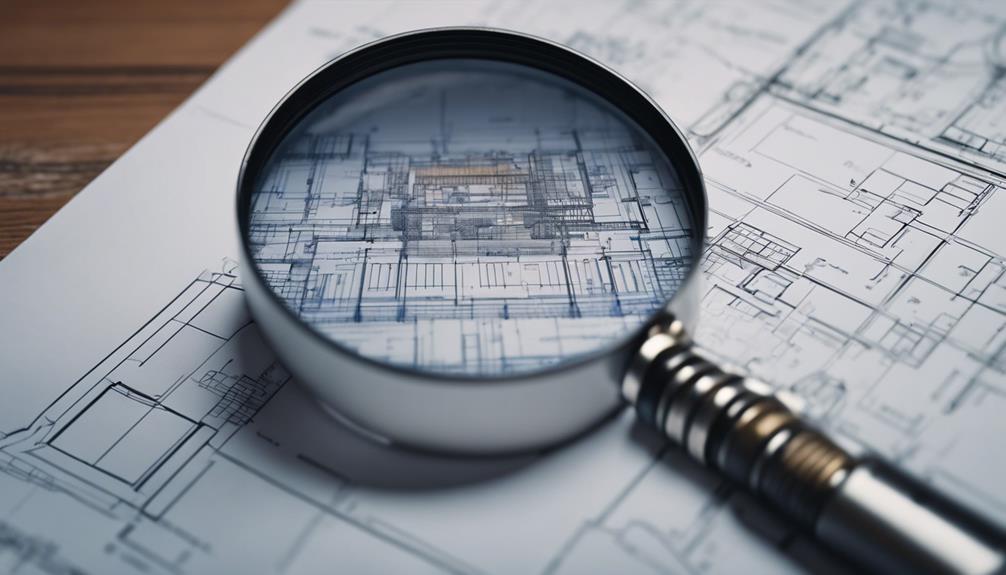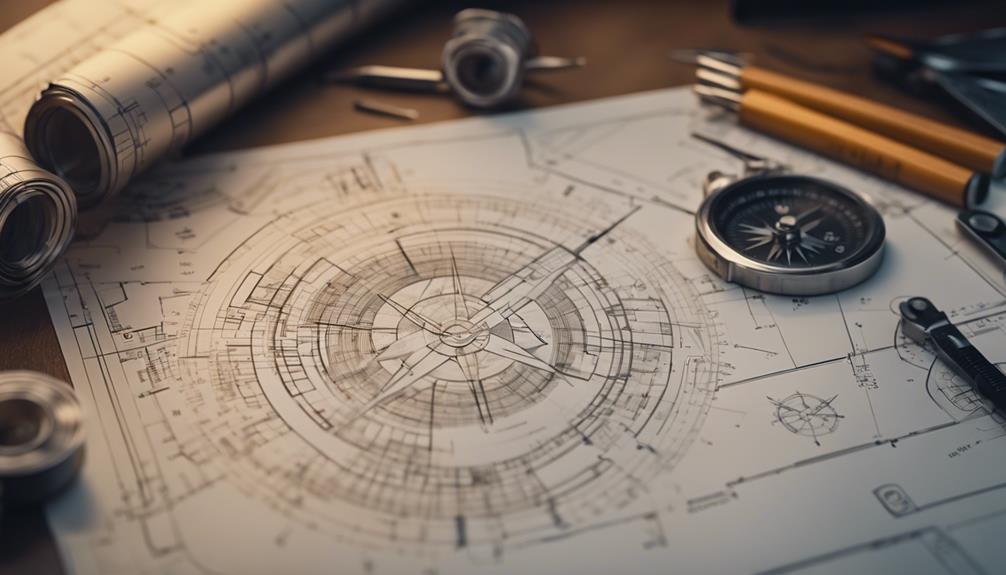Absolutely! Here are seven easy-to-understand ways to analyze a building's structure.
First, create a precise digital model of your building. It's like making a virtual twin of your building on your computer.
Second, figure out how much weight your building can hold. This is called load analysis, and it's super important for safety.
Third, use a method called Finite Element Analysis. This technique helps you find the most effective ways to make your building strong and sturdy.
Fourth, make sure your building is well-balanced and solid. Think of it as ensuring your building is standing on a firm base and won't topple over.
Fifth, pay attention to the little details. Sometimes, the smallest things can make a big difference in how your building holds up.
Sixth, keep an eye on your building's health. Just like humans, buildings can have health issues too. So use Structural Health Monitoring to catch any problems before they become major issues.
Last but not least, design your building to be kind to the environment. A sustainable and eco-friendly building is always a win.
So there you have it, seven cool techniques to analyze a building's structure. Stick around, and you'll be a pro at these in no time. There's lots to learn!
Key Takeaways
- The Building Modeling technique is like playing a video game where architects use computers to make a pretend building before the real one. It helps them understand what the building will look like and how to build it.
- Load Analysis is like a fitness test for a building. It helps to figure out how much weight a building can hold without breaking. This way, we ensure the building is strong and safe.
- Techniques like Finite Element Analysis (FEA) and Reduced-Basis FEA are like solving a big puzzle. They break the structure into tiny pieces, making it easier and quicker to study every part in detail.
- Structural Health Monitoring (SHM) acts like a doctor for buildings. It uses special tools called sensors to check on the building's health regularly.
- Sustainable Structural Design is like giving a green thumb to building design. It uses nature-friendly materials and methods, which help save energy and keep our planet healthy.
Understanding Building Modeling
Building modeling is like creating a digital twin of a real building. It's a cool way to design and study a building before it's actually built. This helps in making sure the building will be strong, safe, and cost-effective.
In this process, you create a digital model of everything that makes up a building. This means not just the walls and roofs, but also the beams, columns, and connections. It's like a giant 3D puzzle, and each piece is important. This helps us understand what would happen if the building had to face real-world conditions like wind or earthquakes.
There's a thing called Building Information Modeling, or BIM, which is super helpful. It helps everyone working on the project to share information easily. In building modeling, you're not alone; you work with a team, all aiming to make the building as good as possible.
The last part of building modeling is designing the connections between steel parts. This is crucial because it ensures the building is strong and safe. By being a part of building modeling, you're helping to create a safer and more efficient world. It's a community that values hard work and smart design.
Importance of Load Analysis
Learning how to build models is like putting together a puzzle. Everyone in your team plays a role, just like each piece of the puzzle. But there's another crucial step – understanding load analysis. It's like knowing how much weight each puzzle piece can handle.
Load analysis is like a roadmap for building sturdy structures. It helps you know how much weight a building can bear, such as people, furniture, wind, or snow. There are rules called structural design codes that tell you how to calculate these weights. It's a careful process, but it's very important.
To make this task easier, there are computer programs that can do these calculations for you. They help you figure out the heaviest combination of loads your building could face. This way, you can make sure your building is strong and safe, even in harsh conditions.
Think of yourself not just as someone who designs buildings, but as a protector of the building's strength. Just like a knight uses his shield to protect himself, you use load analysis to protect your building. Use this tool wisely!
Techniques in Structural Analysis

In the world of building and creating structures, some cool methods can help make your projects safer and stronger. Let's break them down into easy-to-understand concepts.
First up is Finite Element Analysis (FEA). Think of it like a puzzle. This method breaks down a big, complicated structure into smaller, easier-to-understand pieces, or 'finite elements'. It's a helpful tool that provides a detailed look at complex structures, making them easier to understand.
The next method is Reduced-Basis FEA. This is a time-saving technique that helps you do your work faster without losing the quality of your analysis. It's like a superhero of efficiency!
Then, we've Structural Health Monitoring (SHM). SHM is like a doctor for your structures. It uses sensors to constantly check if your building is in good shape, ensuring it's safe and strong all the time.
Lastly, let's talk about structural optimization techniques. These are like fitness trainers for your structures. They help you build structures that are light and cost-effective but also meet all the required performance standards. They aim for the best!
These are some of the cool methods you can use to build safer, stronger, and more efficient structures. They make creating and maintaining buildings, bridges, and other structures a breeze. Isn't that the goal after all?
Principles of Structural Design
Imagine being a conductor of a huge orchestra, where each musician plays a different instrument, but they all work together to create beautiful music. That's what it's like to design a building. You have to know how all the pieces fit together to make a strong, sturdy structure.
First, you need to understand what the building will be used for. This helps you decide what it needs to stand up to, like how much weight it can hold or how strong the wind can be before it shakes. This is your starting point – just like picking the music for your orchestra.
Next, you start planning out where all the parts of the building will go. You figure out where the floors, walls, beams, and pillars will be. It's like deciding where each musician should sit so that they can all hear each other.
Then, you have to think about what the building will connect to and how it will stand up to different things like wind and earthquakes. This is like setting the rhythm of the music – it helps keep everything in order.
Finally, you'll check to make sure your plan will work. You'll make sure that everything is balanced and that the building is stiff enough to stay standing – just like making sure all the instruments are in tune.
Building a structure is a lot like conducting an orchestra. Every piece, every player, has to work together in harmony. You have to understand how everything fits together to create something strong and beautiful.
Art of Detailing in Structures

Let's talk about how we make buildings strong and beautiful – it's a lot like how a jeweler makes a pretty necklace. Each detail in a building, like where parts connect or how it's reinforced, is as important as each gem on a necklace. Good detailing isn't just about making a building look good, it's about making sure it can handle tough situations.
Detailing is all about how a building can change shape under tough conditions without breaking. For example, think about where steel parts connect. If we place these connections just right, it can save money and keep the building strong. Another smart way to save money is by overlapping parts of a beam near the edge of a column. This helps the building perform better.
Role of Structural Health Monitoring
Structural Health Monitoring (SHM) plays a super important part in making sure our buildings are safe and sturdy. Think of it as a doctor's check-up, but for buildings! It helps us spot small problems before they turn into big ones.
We use special techniques to check the health of buildings. But, like anything, it's not always easy and we face some challenges. Let's dive in to learn more about this super cool job!
Importance of Health Monitoring
Structural Health Monitoring (SHM) is like a superhero for buildings and structures. It's a system that uses special tools called sensors to check for any possible harm that could be dangerous to the building.
Think of it like your building's very own bodyguard. It works non-stop to find problems such as too much pressure, stretching, or shaking before they become dangerous. This is done so that any issues can be fixed early, which helps to keep your building standing for a long time.
The helpful information that comes from SHM isn't just random numbers. They're actually a sign that your building is safe. This is important for your business, but even more so for the people in it.
Techniques in Structural Monitoring
Structural Health Monitoring (SHM) is a cool way to make sure our buildings aren't just standing, but also doing well! It's like a doctor for buildings. We use SHM to spot problems early and fix them on time. This way, our buildings stay strong and last longer.
SHM uses special tools called sensors. These sensors keep an eye on the building, checking for things like too much pressure or shaking. They give us important information about how safe and well our building is doing.
This amazing technology helps make our buildings stronger and safer. It spots damage early, so we can fix it before it gets worse. This way, our buildings stay strong and keep us safe for a long time.
Challenges in Health Monitoring
Building stronger and safer buildings can be like solving a big, exciting puzzle. One of the tools we can use is called Structural Health Monitoring. It uses special devices called sensors to check for any damage to the building early. This way, we can fix it faster and keep the building strong. But it's not always easy.
Putting in the sensors can be like a tricky game of hide-and-seek. Buying the sensors might also cost quite a bit of money. Plus, understanding what the sensors are saying can be like trying to learn a new language. But don't worry! We shouldn't be scared of these challenges. Instead, we should see them as chances to make our buildings even safer.
Think about it: every time we put in a sensor, we're making the building stronger. Every time we find damage, we're making it safer. In the end, our goal is simple: to build strong, tough buildings that can stand the test of time. So let's not shy away from this puzzle, but solve it together!
Embracing Sustainable Structural Design
In the world of building and creating structures, we can help our planet by being smart about how we build and what materials we use. This means we need to think about parts of the building that can help it be more eco-friendly. For example, we can add things like solar panels and good insulation to make the building use less energy.
Choosing the right materials is very important. We want to pick materials that don't harm the planet, not just now but also in the future. We also need to think about the whole life of the building. We should ask questions like: how will it affect the environment while it's being built? What about when it's being used? Or when it's time to take it down? This helps us make sure our building is really helping the planet.
Conclusion
Get ready to dive into the world of building analysis! The first thing you need to know is how to model a building. It's like creating a mini-version of it on your computer. Next, learn about load analysis. It's all about knowing how much weight your building can handle.
Then, you need to get good at using special techniques to analyze your building's structure. This helps you understand how it all fits together. It's also important to know the rules of structural design. They're like the recipe for a well-built building.
Don't forget the art of detailing. It's like the finishing touches on a cake, they make your building stand out. And, just like how you go to the doctor for check-ups, your building needs regular monitoring to stay healthy.
Last but not least, embrace sustainable design. It's about making buildings that are good for the environment.
You see, every little detail counts in architecture. Always aim for your best, because your building is a showcase of your creativity.


